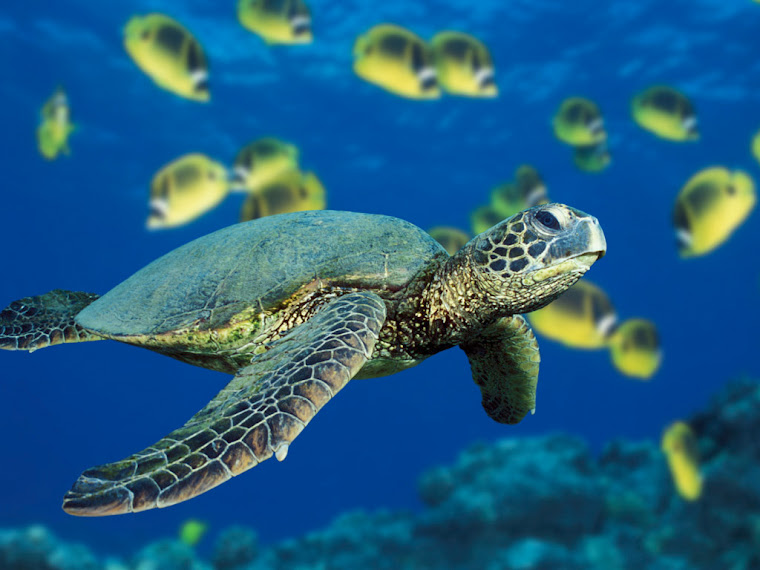
*My illustration of an Algae...
There are three types of Algae, Green Algae, Brown Algae, and Red Algae.
Most green algae (phylum Chlorophyta) live in freshwater and terrestrial environments. Only around 10% of the estimated 7,000 species are marine; many of these marine species are unicellular. This, however does not mean that multicellular green algae are uncommon in the sea. Certain species dominate in environments with wide variations in salinity such as bays and estuaries and in isolated tide pools on rocky coasts. Most multicellur green algae have a simple thallus compared to the other two groups of seaweeds. Their pigments and food reserve are the same as those in plants, so it is thought that land plants evolved from green algae. Chlorophyll in both green algae and plants is not normally masked by any other pigments, and green algae typically have a bright green thallus.The color of brown algae (phylum Heterokontophyta, class Phaeophyta), which actually varies from olive green to dark brown, is due to a preponderance of yellow-brown pigments, particularly fucoxanthin, over chlorophyll. Almost all the approximately 1,500 known species are marine. Brown algae are often the dominant primary producers on temperate and polar rocky coasts and include the largest and most complex seaweeds. The brown algae have yellow-brown pigments in addition to chlorophyll. They include the largest and structurally most complex seaweeds. The simplest brown algae have a finely filamentous thallus, as in the widely distributed Ectocarpus. The thallus is flat and branched in Dictyota and fan-shaped and lightly calcified in Padina. Both are tropical and subtropical. The thallus of most species of Desmarestia is found in cold waters. It ranges from the Antarctic, where it is one of the dominant species, to temperate shores elsewhere.
There are more species of marine red algae (phylum Rhodophyta) than of marine green and brown algae combined. Among other features they have red pigments called phycobilins, which mask chlorophyll. Most species actually are red, though some may have different colors depending on their daily exposure to light. The group is essentially marine; only a few of the approximately 4,000 species live in fresh water or soil. Red algae inhabitat most shallow-water marine environments. Some are harvested for food and for the extraction of varius products.
Parts of a Cell (algae):
1) Nucleus: The organelle of eukaryotic cells that contains the chromosomes.
2) Chloroplast: The organelle where photosynthesis takes place.
3) Flagellum: A long, whip-like organelle that is usually involved in locomotion.
4) Pellicle: (noun) A thin skin or film, such as an organic membrane or liquid film.
Now, that we are both experts on algae...please take the time to answer the questions below.
3 Questions:
1. How are algae and plant cells alike?2. What kind of algae is most dominant?
3. How many types of algae exist?
Thank You, or like we say the island way, Si Yu'us Ma'ase...


No comments:
Post a Comment